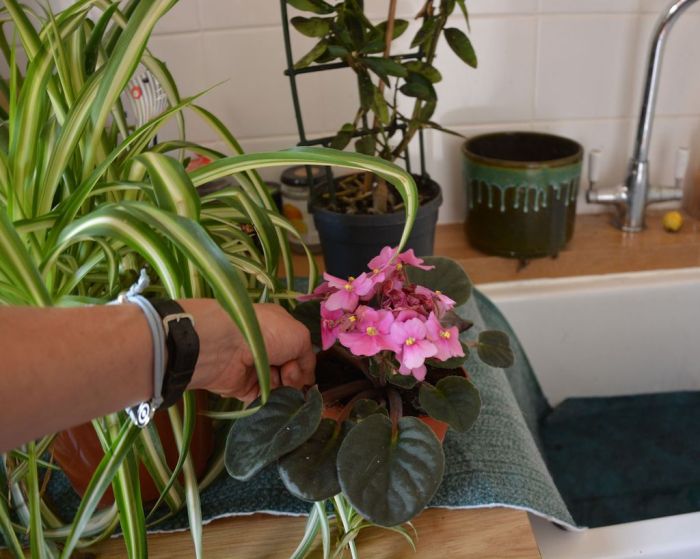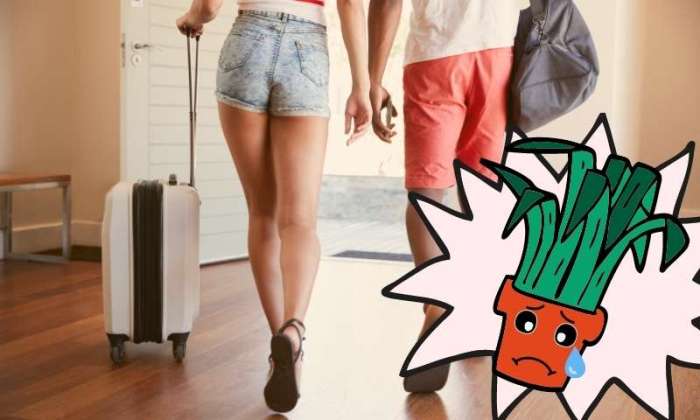How to Water Plants When You Are Away
Automatic Watering Systems
How to water plants when you are away – Automated watering systems offer a convenient solution for keeping your plants hydrated while you’re away. Several options exist, each with its own advantages and disadvantages depending on your specific needs and gardening setup.
Types of Automatic Watering Systems
Different automatic watering systems cater to various plant types and garden sizes. Choosing the right system depends on factors like budget, plant needs, and ease of installation.
| System Type | Cost | Water Efficiency | Plant Suitability | Installation Difficulty |
|---|---|---|---|---|
| Drip Irrigation | Medium to High | High | Suitable for most plants, especially vegetables and flowers | Medium |
| Soaker Hoses | Low to Medium | Medium | Best for beds and rows of plants | Low |
| Self-Watering Globes | Low | Low | Suitable for individual potted plants | Low |
Drip Irrigation System Installation
Installing a drip irrigation system involves several steps. Careful planning ensures efficient and effective watering.
- Plan the layout: Determine the placement of your plants and the path of the water lines.
- Gather materials: Acquire necessary components such as tubing, emitters, connectors, and a water source.
- Assemble the system: Connect the tubing, emitters, and connectors according to your plan.
- Test the system: Turn on the water and check for leaks or blockages.
- Connect to water source: Attach the system to a timer or a water source with a regulated flow.
Smart Watering Systems
Smart watering systems, controlled via smartphone apps, offer precise control and monitoring of watering schedules. They often include features such as soil moisture sensors and weather data integration.
- Pros: Precise control, data-driven irrigation, remote monitoring, water conservation.
- Cons: Higher initial cost, reliance on technology and internet connectivity, potential for malfunction.
Manual Watering Techniques for Extended Absences: How To Water Plants When You Are Away
While automated systems are ideal, manual techniques can effectively keep plants hydrated during shorter absences. Preparation and thoughtful planning are key to success.
Preparing Plants for a Long Absence
Before leaving, take steps to minimize water loss and ensure your plants remain healthy. This includes adjusting the soil, pruning, and grouping plants with similar needs.
- Pruning: Remove dead or damaged leaves and stems to reduce water demand.
- Soil Amendment: Incorporate organic matter like compost to improve water retention.
- Grouping Plants: Place plants with similar watering needs together for easier management.
Deep Watering Schedule
Thoroughly watering your plants before departure helps them withstand a longer period without additional watering. Focus on saturating the soil deeply.
- Water deeply and thoroughly a day or two before leaving.
- Use a watering can or hose to ensure the water reaches the roots.
- Mulch the soil surface to help retain moisture.
Water-Absorbing Polymers
Water-absorbing polymers, also known as hydrogels, can supplement watering by retaining moisture and releasing it slowly to the plant roots. Different types offer varying properties.
- Polyacrylamide: Widely used, good water retention capacity.
- Sodium polyacrylate: High absorbency, can be expensive.
- Potassium polyacrylate: Less common, may offer specific benefits for certain plants.
Using Bottled Water Systems for Vacation Watering
Simple DIY systems can provide supplemental watering, especially for smaller plants or shorter absences. However, they have limitations.
DIY Gravity-Fed Watering System
A simple gravity-fed system can be constructed using recycled bottles. The rate of water release can be adjusted by altering the size of the hole in the bottle cap.
- A clear 2-liter soda bottle, its cap punctured with a small hole to regulate the slow drip of water onto the soil. The hole should be small enough to create a slow drip, preventing rapid water loss.
- The bottle is inverted and the neck is buried in the soil near the plant’s roots. The water will slowly seep into the soil.
- Ensure the bottle is securely placed to avoid tipping or displacement.
Limitations of Bottled Water Systems
These systems are best suited for short absences and smaller plants. They lack the capacity and precision of automated systems.
- Limited water capacity restricts their use to shorter absences.
- Not suitable for plants with high water requirements.
- Water flow rate is difficult to precisely control.
Wicking Systems
Wicking systems utilize absorbent materials to draw water from a reservoir to the plant roots. They offer a more consistent water delivery than simple gravity-fed systems.
- Rope wicking: A rope or cord is placed from a water reservoir into the soil.
- Fabric wicking: A strip of absorbent fabric acts as a wick.
Choosing the Right Watering Method Based on Plant Needs
Plant water requirements vary greatly. Understanding these needs and considering pot size and material is crucial for selecting an appropriate watering method.
Plant Water Requirements
| Plant Type | Water Requirement | Soil Type Preference |
|---|---|---|
| Succulents | Low | Well-draining |
| Begonias | Medium | Moist but well-draining |
| Ferns | High | Moist, rich |
Pot Size and Material
Larger pots retain moisture longer than smaller ones. Porous materials like terracotta dry out faster than plastic or ceramic.
- Larger pots need less frequent watering.
- Terracotta pots require more frequent watering than plastic pots.
Signs of Underwatering and Overwatering

Source: futurecdn.net
Recognizing these signs helps you adjust your watering strategy to keep your plants healthy.
- Underwatering: Wilting leaves, dry soil, stunted growth.
- Overwatering: Yellowing leaves, soggy soil, root rot.
Seeking Help While Away
If you’re unable to implement any of the above methods, enlisting the help of others ensures your plants receive the care they need while you’re away.
Finding a Reliable Plant Sitter, How to water plants when you are away

Source: houseplanty.com
Preparing a checklist helps ensure you find a trustworthy individual to care for your plants.
- Create a list of potential plant sitters (friends, family, neighbors).
- Check their availability during your absence.
- Verify their experience with plant care.
Communicating Plant Care Instructions
Clear and concise communication prevents misunderstandings and ensures your plants receive proper care.
- Provide detailed watering schedules and instructions.
- Include a list of plants and their specific needs.
- Leave contact information in case of emergencies.
Local Plant Care Services
Many areas offer professional plant care services. These services provide reliable plant care for various durations.
- Search online for local plant care services.
- Check reviews and ratings before hiring a service.
- Obtain quotes from multiple providers.
FAQ Insights
What if I forget to set up a watering system before I leave?
If you unexpectedly need to leave without a pre-arranged watering system, try to ask a trusted neighbor or friend to water your plants while you’re away. Alternatively, group your plants together and thoroughly water them before leaving. This may not be ideal for long absences, but it could buy you some time.
How often should I check my automated watering system while I’m away?
While automated systems are designed for independence, it’s still a good idea to check on them, especially if you’re away for an extended period. A quick check can help identify any malfunctions or unexpected issues before they significantly impact your plants.
Can I use ice cubes to water my plants while I’m away?
Ice cubes can provide a slow release of water, but this method is generally not recommended for extended absences or for plants with high water requirements. The amount of water provided by ice cubes is limited, and they may not adequately hydrate your plants.
What should I do if I return to find my plants wilted?
Gently water your wilted plants thoroughly, ensuring the soil is evenly moistened. Check the soil for dryness, and if it’s severely dry, consider soaking the pot in water for a while to rehydrate the root ball. Monitor your plants closely for a few days to ensure they recover.




















